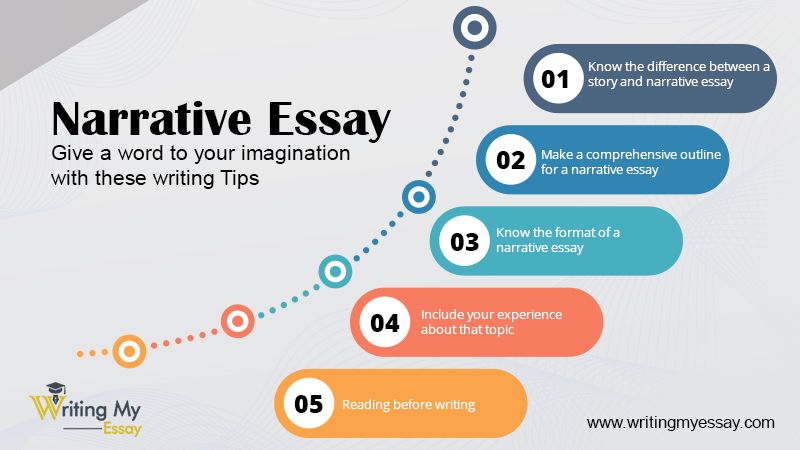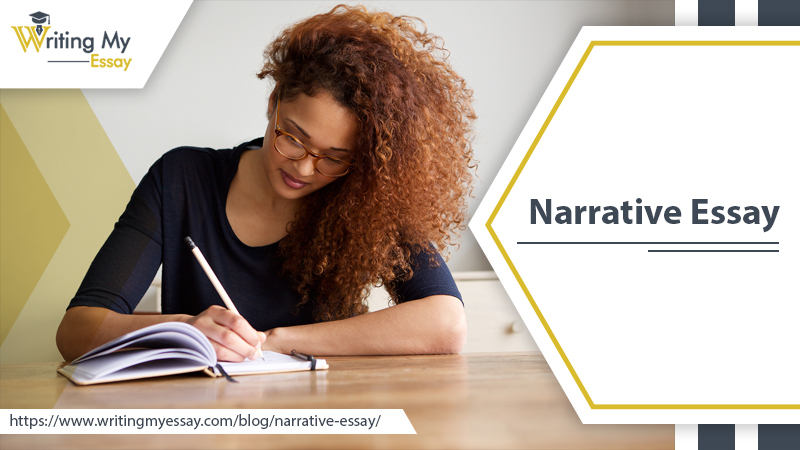Writing a narrative essay is not everyone’s forte. It requires creative juices flowing in your head and your ability to review topics and explore your imagination. When you write in an attractive format it makes the essay better and becomes easier to comprehend the writer’s thoughts. If you’re looking for a deeper analysis for a good reference for a narrative essay.

Contents
- 1 Detailed Analysis of Engrossing Narrative Essay
- 2 What is a Narrative Essay? Examples & Tips
- 3 Key Differences Between Short Story and a Narrative Essay
- 4 How to Create a Comprehensive Narrative Essay?
- 5 Topics for Narrative Essays
- 6 Topics for Personal Narrative Essays include:
- 7 How to Start off a Narrative Essay?
- 8 Comprehensive Outline for a Narrative Essay
- 9 Narrative Essay Examples
- 10 Conclusion:
Detailed Analysis of Engrossing Narrative Essay
In high school and college, you will be required to write a variety of essays. Among all types of academic writings, the narrative essay is the most basic. It’s written in the style of a short tale.
What is a Narrative Essay? Examples & Tips
A narrative essay is all about narrative, a story about a personal experience you had. A descriptive essay allows getting personal and creative, unlike academic writing.
It speaks about your ability to express your ideas creatively and compellingly. And, it follows an appropriate narrative structure. They are often assigned in high school or composition classes at University. You can inculcate such techniques when writing a personal statement for an application.
You may come across different types of essays and it is difficult to tell the difference between identical articles at times. Many want to write a narrative essay, but can’t differentiate between—– a descriptive essay and the narrative essay.
The descriptive essay aims to paint a picture of a person, a location, an experience, or an item. They have a sequence of events. The storyline is either non-existent or hazy.
Choosing A Topic
Narrative essay assignments vary in the direction you’ve given about the topic. You may be assigned quite a specific topic or choice of topic to work with.
1. Specific prompts
- Write about your experience on the first day of School
- Compile a story about your favorite holiday destination.
- You may also be given prompts that avail you with a wide range of topic
2. Open-ended prompts
Write about an experience where you learned something about yourself? Describe an achievement you are proud of. What did you accomplish, and how? In these cases, you might have to think harder to decide what story you want to tell.
The best kind of story for a narrative essay is the one– you use to talk about a particular theme or lesson, or that takes a surprising turn somewhere along the way.
For example, a trip where things went as per your plans and make it less interesting when something unexpected happens. Mention any experience that might surprise the reader or teach them something.
Narrative essays in college applications
When applying for college, you may be asked to write a narrative essay expressing your personal qualities.
For example, this application prompts Common App to require you to respond with a narrative essay.
1. College application prompts
Recall a time when you’re facing setbacks or failures. How did it affect you, and what did you learn from the experience?
In this context, choose a story that instills deeper interest, but also expresses the qualities, you’re looking for—- resilience and gives you the ability to learn from failure—and frame the story in a way that emphasizes these qualities.
Key Differences Between Short Story and a Narrative Essay
It appears to be difficult to tell the difference between a short tale and a narrative essay. You may find many things in common since you present a narrative in both instances. However, these two kinds of tasks aren’t comparable as it seems.
The word “narrative” refers to a variety of literary genres, such as essays, novels, and short stories, different types of writing, on the other hand, are linked with various tales.
A narrative essay is a piece of writing that recounts a true tale or describes a real-life event. A short tale, on the other hand, necessitates the creation of a fictitious storyline and characters.
Also, read about how to write an article review.
How to Create a Comprehensive Narrative Essay?
As mentioned, a narrative essay is all about conveying stories. When you demonstrate a point by telling a tale in the narrative essay. You don’t have to contain language, a location, or a storyline.
You should explain experiences while someone is going through them. The readers gain a life lesson from the explained events.
1. Make the following preparations:
A large number of students miss the crucial planning step. When students opt to write haphazardly without an outline, they wind up missing important information. For pupils who are not good writers, this may be a roadblock. To write an essay, you must plan. When writing a narrative essay for a college course, you need to be a bit more sophisticated.
2. Make a point:
Your essay should make a point. Persuade readers that your experience gives you the potential to impact others’ lives. They wind up just recounting a tale. Your assertion, which will be mentioned in the essay’s opening, will be your point.
3. Experiment:
Even if you aren’t the best essay writer, a narrative essay allows you to attempt something new. You may be creative with your narrative essay themes by creating them about emotional events or daily occurrences.
When you write your essay from someone’s point of view you’ve never seen. It could be a celebrity, a historical person, ancestor you’ve always adored. You might even attempt creating a story from a protagonist’s point of view.
4. Remember essay structure:
Even if you’re playing with your narrative essay, keep in mind it needs to be structured. An introduction, body paragraphs, and a conclusion should be included. Take the time to read narrative essays by well-known writers to learn how the pros do it.
Narrative essays are often published in literary publications and journals. Many of them are written in innovative ways that may inspire you. So don’t forget to have fun while writing a narrative essay.
Topics for Narrative Essays
When it comes to learning, experience is always the biggest teacher
-
Fear is a natural and understandable feeling. Describe the moment when you conquered your greatest fear. In various circumstances, heroism requires courage or ignorance. Write about a heroic moment you’ve experienced.
- Nobody is flawless, and everyone makes errors. Discuss a blunder you’ve made and the lessons you’ve learned from it.
- It’s always a good idea to come out of your comfort zone when life becomes too mundane.
- Share a story about a moment when you tried something new
-
Students’ first job experiences teach them responsibility and imbibe a sense of maturity. Create a story about your first job.
Topics for Personal Narrative Essays include:
Your own experience is the fulcrum of a personal story essay. It must elicit an emotional response from the reader. To assimilate, the image you’re painting must be vivid and emotionally appealing to the reader. Using a lot of information to accomplish this objective is a fantastic way to proceed.
The following are some examples of personal story topics:
- You will never forget this teacher.
- An event that placed your life in jeopardy.
- You have a hilarious tale about something that occurred to you.
- A memory from your youth.
How to Start off a Narrative Essay?
1. Format of a Narrative Essay
An introduction, three major body paragraphs, and one conclusion paragraph make up a standard five-paragraph narrative essay. Depending on the subject, you may adjust the number of body paragraphs, if necessary.
The plot, characters, location, conflict, and theme are the five components that most stories include.
2. Plot
The storyline is the event that you want to tell in your narrative. It has to do with the order of events in your narrative.
2. Setting
The setting refers to the place where the event took place. It may be your home, school, or any other location where you were when the incident occurred.
4. Characters
The individuals engaged in the event are referred to as characters. You must name everyone who is participating, whether they are the primary character or a supporting character.
5. Conflict
The issue that the characters confront during the event is called conflict. A conflict in the story is defined as a point of tension that must be resolved.
6. Theme
The essay’s theme elucidates the story’s general aim as well as the writer’s motivations for selecting the subject.
Comprehensive Outline for a Narrative Essay
The first step in writing a decent essay is to create a solid narrative essay outline. Outlining is a crucial aspect of writing a successful essay.
Make three sections for your essay.
- Introduction
- Body
- Conclusion
1. Introduction
Briefly summarize everything and explain what you’ll be talking about in the main body. Narrate an excellent tale to the reader, but keep the specifics bare minimum. If you want to write a fantastic introduction, keep the following things in mind.
- Introduce the subject.
- Supporting sentences should be included.
- Give your thesis statement.
2. Paragraphs in the body
Now that you’ve gotten your readers’ attention, you can begin telling your tale. Eventually. Allow the events of your narrative to unfold in chronological order.
The main body of your essay comprises many sections. Include the following elements in it:
- In each paragraph, discuss one concept.
- Follow logical patterns and chronological sequence to make the narrative easy to comprehend for the reader.
- Emphasize the experience and inform the audience of the universal truth that the tale reveals.
3. Conclusion
Finish your essay with a great and compelling conclusion. Depending on your narrative, your essay may have a joyful or sad conclusion. Make sure your essay accomplishes its goal and communicates your point.
- Compile a list of the most important points.
- Remind your audience of the main point.
- Give your audience something to ponder.
Read the most engaging debate topics.
Narrative Essay Examples
Example 1:
Fenny, almost six feet tall and big-boned, determined that she would not go to work. She cares about her “beautiful babies” and won’t abandon them for the sake of her job to anyone else’s care.
Example 2:
John had no chance of getting a job in the town. He became disappointed, but wasn’t ready to give up. He hoped to find a way for himself. He told himself that he wasn’t a great chef. However, he could make decent meals to frighten hungry people away and prevent the guy from starving.
Conclusion:
Before you begin writing a narrative essay, make sure you grasp the essential format requirements well. Don’t forget that even non-fiction writing may benefit from some kind of originality.
Useful Services We Offer At WritingMyEssay
